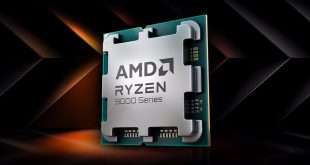With the introduction of Google Android Wear operating system, hardware makers developing ultra-low-power chipsets started to unveil their platforms for wearable devices, such as smart-watches or smart-eyewear. Imagination Technologies, a leading designer of general purpose processing cores as well as multimedia and graphics processing engines, said this week that it would reveal a number of initiatives aimed at the wearable computing devices.
While ImgTec is only preparing to introduce its MIPS, PowerVR and Ensigma cores optimized for ultra-low power consumption, there are companies who already offer platforms for wearable electronics based on technologies from Imagination. One of the several MIPS-based application processors designed for wearables is the Ingenic Newton, which was developed by Ingenic Semiconductor, a company from China.
The company designs its own MIPS-based, ultra-low power high-performance micro-processing core called XBurst which has already been shipped in more than 40 million devices (tablets, e-book readers, multimedia players, etc.).
Ingenic Newton is a highly integrated chip that includes 1GHz MIPS-based Ingenic JZ4775 CPU with 256KB L2 cache; memory and storage controller that supports mobile DDR3/DDR2/LPDDR RAM as well as eMMC storage; 2D graphics engine, video processing engine (supports MPEG-2, MPEG-4, VC-1, H.264, VP8, RV9 codecs) with 720p@30fps playback, 3-axis gyroscope, accelerometer magnetometer, pressure, humidity and temperature sensors; Wi-Fi (802.11 a/b/g/n at 2.4/5 GHz), Bluetooth 4.0 + EDR (including Bluetooth LE support), NFC and FM connectivity. The SoC fully supports UART, I2C, USB and GPIO.
Ingenic Newton is very small (21.6mm*38.4mm) chip and it achieves very impressive power consumption figures under typical workloads: standby power is 4mW, generic computing tasks (e.g., MP3 playback) take up to 100mW on average while peak power consumption is around 260mW. This means that Ingenic-powered smartwatches can last for 30+ hours on a single charge, according to ImgTec.
Linux 3.0.8, Android 4.4 KitKat and several real-time operating systems have already been ported to the Newton platform and developers can access the open source drivers. Additionally, Ingenic can provide specialized software packages for customers that are looking at voice or gesture control for user interfaces.
Ingenic already offers its Newton platform for purchase.
KitGuru Says: These days it is very interesting to see various hardware platforms for wearable electronics. For example, Google uses a rather high-performance smartphone-class SoC inside Google Glass. Meanwhile, Toshiba thinks that a chip featuring ARM Cortex-M4F processor (with 48MHz clock-rate) with a DSP and a floating point processing unit, should be enough for wearable gadgets. Ingenic believes that a 1GHz MIPS core should be fine for smart-watches and other gear. It looks like at present hardware vendors simply have no idea what kind of apps will be run on wearable electronics…
 KitGuru KitGuru.net – Tech News | Hardware News | Hardware Reviews | IOS | Mobile | Gaming | Graphics Cards
KitGuru KitGuru.net – Tech News | Hardware News | Hardware Reviews | IOS | Mobile | Gaming | Graphics Cards





“It looks like at present hardware vendors simply have no idea what kind of apps will be run on wearable electronics…”. Not true. It is more about how to implement a framework to support the apps that will gather sensor data, aggregate/filter data, preprocess some of them and fully process some of them as well.
While a 48Mhz chip might be ok to gather data. it would not likely process it in any complex way. So a 1Ghz processor seems optimium as seen on the Gear 2 device yet giving 3 days of battery life that is more acceptable for a smartwatch. The dependence on a Smartphone for some co-processing and taking of GPS data from it as well as notifications instreams. This is gather/filter process the watch needed to do. One would expect very very aggressive power saving schemes to rush the clock to nominal sleep like stage for most of the time while displaying last notification and clock on the face. An efficient sensor is required to ensure that watch face is aligned to the face to automatically power-on the display then power it off again when moved away. This has yet to be done in milliwatts!. A properly tweaked OS is needed for such an application as Sony realises with their proprietary Smartwatch 2.